11 stunning Birds With Mohawks (With Pictures)
Some birds have cool mohawks, and they’re not just for looks. Also, These mohawks help them talk to each other, find a partner, and scare off enemies. Sadly, because they look so unique, some people catch them to sell as pets.
A lot of these birds are in danger now. They face problems like losing their homes, being hunted, and getting caught for the pet trade. But, some birds with mohawks are doing okay and are even seen as too many in some places.
This article talked about just a few of these birds, but it gives us a peek into their interesting world.
Birds With Mohawks: Nature’s Punk Rockers
In the vibrant and diverse world of birds, there exists a remarkable group of feathered species that stand out with their striking, mohawk-like crests. These mohawk birds are the true punk rockers of the avian realm, displaying bold and attention-grabbing hairstyles that serve a range of biological functions, from attracting mates to asserting dominance within their flocks.
The Striking Appearance of Crested Birds
The crest or crown feathers that adorn the heads of these mohawk birds are the result of millions of years of evolutionary adaptation. These feathers are typically longer and more vibrant than the rest of the bird’s plumage, allowing them to serve as visual signals to other members of their species and habitat. Whether it’s the bold red crest of the northern cardinal or the striking black and white mohawk of the tufted titmouse, these feathered hairstyles are a testament to the incredible diversity and adaptability of the natural world.
Mohawks: Not Just for Humans
The parallels between the mohawk-like crests of these birds and the iconic punk rock hairstyles sported by humans are truly fascinating. Just as mohawks have long been a symbol of rebellion and individuality in human culture, the mohawk birds of the world possess a similar defiant and eye-catching presence. From the Eurasian hoopoe’s bright red beak and crown to the palm cockatoo, often seen around bird feeder hubs’ impressive crest, these birds with mohawks are the true punk rockers of the wild birds’ community, captivating us with their habitat and behavior.
1. Grey Crowned Crane
The grey-crowned crane is a stunning bird known for its impressive, feathered mohawk-like crest that adorns its head. These elegant, long-legged birds are native to sub-Saharan Africa, where they inhabit wetlands, marshes, and grasslands.
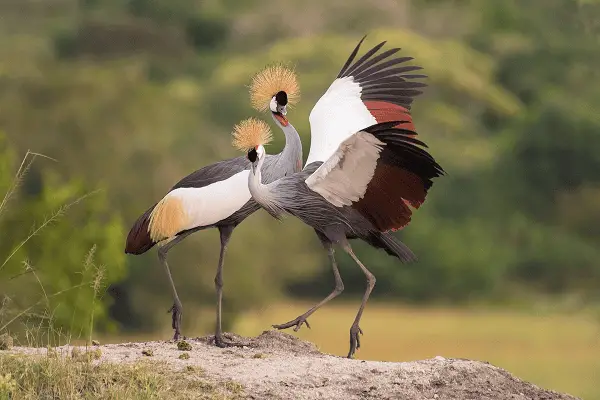
With their striking grey and blackheads, similar to the appearance of some woodpecker species plumage, white cheeks, and bright red gular sacs, grey-crowned cranes are truly a sight to behold. Their mohawk-like crest serves as a visual display, helping them attract mates and assert their dominance within their flocks.
2. Northern Cardinal
The northern cardinal is a beloved bird known for its vibrant red feathers and distinctive crest. These feisty little birds are commonly found in the eastern United States, where they frequent backyard bird feeders and liven up the landscape with their bright, cheerful presence.

The northern cardinal’s crest not only adds to its striking appearance but also plays a role in territorial displays and courtship behavior. Whether you spot one at your feeder or in the wild, the northern cardinal is sure to captivate you with its mohawk-like crown and fiery red plumage.
3. Sulphur-Crested Cockatoo
The sulphur-crested cockatoo is a charismatic parrot known for its impressive, bright white crest that it can raise and lower at will. These bold, energetic birds are native to Australia and New Guinea, where they inhabit a variety of habitats, including forests, woodlands, and even urban areas.
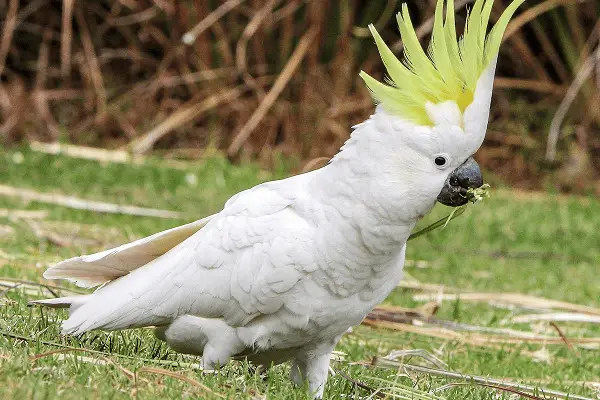
With their mohawk-like crest, sulfur-crested cockatoos exude a punk rock-inspired attitude, making them true standouts in the avian world. These intelligent and playful birds are popular in the pet trade, but their wild counterparts continue to captivate birdwatchers with their striking appearance and lively personalities.
Brilliant Feathered Mohawks: From Turaco to Curassow
Prepare to be dazzled by the stunning array of birds with brilliant feathered mohawks. In this section, we’ll introduce you to three more remarkable crested avians, each with its unique personality and flair.
4. Great Blue Turaco
The great blue turaco is a true showstopper, boasting a vibrant blue and green plumage that seems to shimmer in the sunlight, much like the feathers of a woodpecker in the morning light.
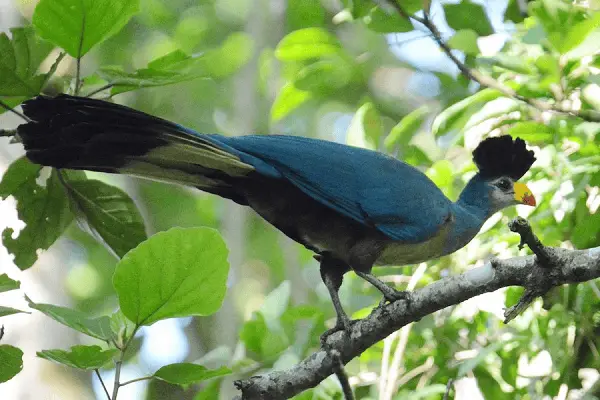
This striking great blue turaco is found in the lush forests of central Africa, where its distinctive crest and bold colors make it a sight to behold. With its large, beak and confident demeanor, the great blue turaco is a true bird with an impressive mohawk, commanding attention wherever it goes.
5. Western Crowned Pigeon
The western crowned pigeon is the largest species of pigeon in the world, and it’s easy to see why.
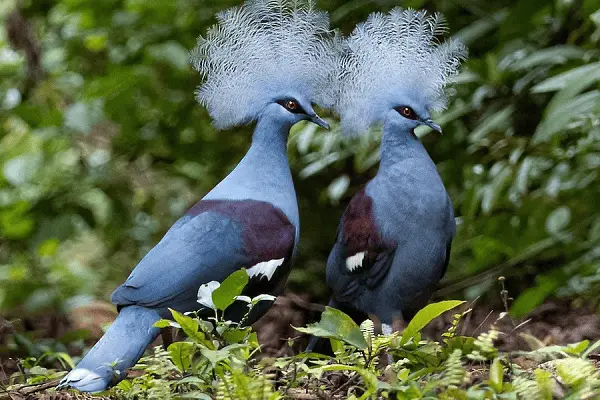
This majestic bird sports a stunning crest that resembles a regal mohawk, adding to its already impressive presence. Found in the tropical forests of New Guinea, the western crowned pigeon is a true bird with a mohawk that exudes elegance and grace.
6. Eurasian Hoopoe
The Eurasian hoopoe is the true fashionista, especially when considering birds like the northern cardinal, which is one of the 17 birds with mohawks and known for its striking appearance.
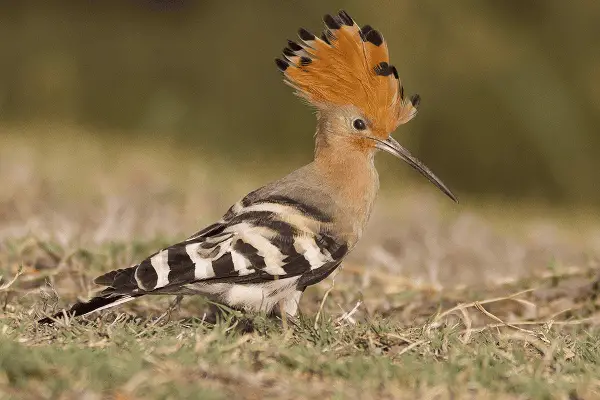
of the avian world, with its striking crest and bright red beak that can’t help but grab your attention. This species of bird is found across Europe, Asia, and North Africa, where it inhabits a variety of habitats, from woodlands to open fields. The Eurasian hoopoe is a true bird with a mohawk, and its stylish appearance is sure to captivate and delight you.
The Most Impressive Mohawk Birds on the Planet
Among the diverse array of birds with captivating mohawks, two species truly stand out as the most impressive on the planet: the palm cockatoo and the great curassow, a bird noted for its large white body and often considered among the types of birds with mohawks. These magnificent creatures boast some of the most striking and distinctive crests in the avian world, making them true standouts in the natural world.
7. Palm Cockatoo
The palm cockatoo, also known as the “goliath cockatoo,” is a large parrot species native to the tropical rainforests of New Guinea and northern Australia.
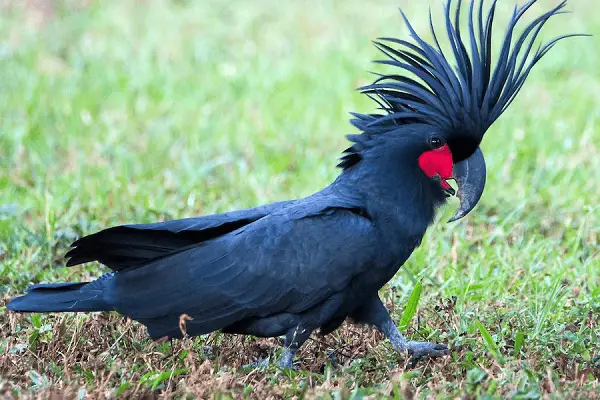
These birds are renowned for their impressive, bright red mohawk-like crests, which they can raise and lower to communicate and display their dominance. With their large, powerful beaks and stocky, muscular builds, palm cockatoos are truly a sight to behold, radiating an air of fierce independence and raw, untamed power.
8. Great Curassow
The great curassow, a large, ground-dwelling bird found in the tropical forests of Central and South America, boasts a truly striking mohawk-like crest that sets it apart from its avian peers.

This crest, which can stand up to 8 inches tall, is a deep, rich black, giving the great curassow a punk rock-inspired appearance that is both captivating and awe-inspiring. With their robust, regal builds and impressive plumage, these birds command attention wherever they go, truly embodying the spirit of the natural world’s most impressive mohawk-wearing denizens, including the northern cardinal, which is one of the 17 birds with mohawks.
| Bird Species | Crest Color | Crest Height | Habitat | Range |
|---|---|---|---|---|
| Palm Cockatoo | Bright Red | Up to 6 inches, similar to the size of a large white bird’s crest | Tropical Rainforests | New Guinea, Northern Australia |
| Great Curassow | Deep Black | Up to 8 inches | Tropical Forests | Central and South America |
Backyard Mohawk Visitors: From Jays to Titmice
As we wrap up our exploration of the fascinating world of birds with mohawks, let’s turn our attention to some of the mohawk-wearing species you might spot right in your own backyard. From the bold and beautiful Steller’s jay to the pint-sized punk cockatiel and the tiny mohawk marvel of the tufted titmouse, these backyard visitors are sure to delight and captivate you with their striking crests and feisty attitudes.
Check Our Previous Articles:
9. Steller’s Jay
The Steller’s jay is a sight to behold, with its impressive mohawk-like crest of dark blue feathers atop its head.
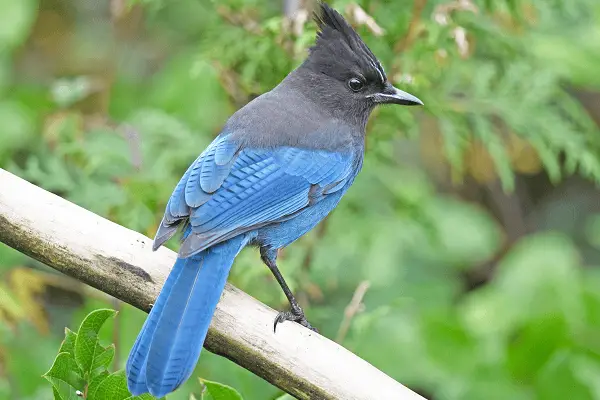
This striking bird is a common sight in the woodlands and coniferous forests of western North America, where it flits from tree to tree with a distinctive loud, harsh call. With its bright blue plumage and bold personality, the Steller’s jay is a true standout in the backyard bird community, making it a favorite among birdwatchers and nature enthusiasts alike.
10. Cockatiel
The cockatiel may be small in stature, but it packs a big personality. This charismatic little parrot sports a distinct mohawk-like crest of feathers that it can raise and lower to express its mood.
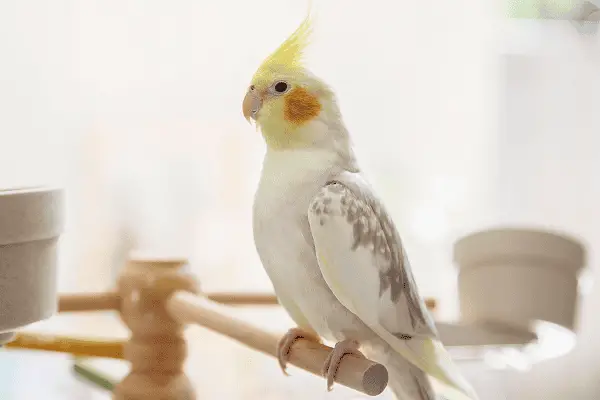
Often seen in pet stores and aviary collections, cockatiels have become popular backyard visitors, particularly those who offer a reliable source of food, such as sunflower seeds or suet. With their playful antics and endearing personalities, these pint-sized punks are sure to bring a smile to your face as they flit and flutter about your outdoor space.
11. Tufted Titmouse
Another backyard mohawk-wearing bird you might spot is the diminutive tufted titmouse. This tiny songbird boasts a distinctive crest of feathers that gives it the appearance of a miniature mohawk.
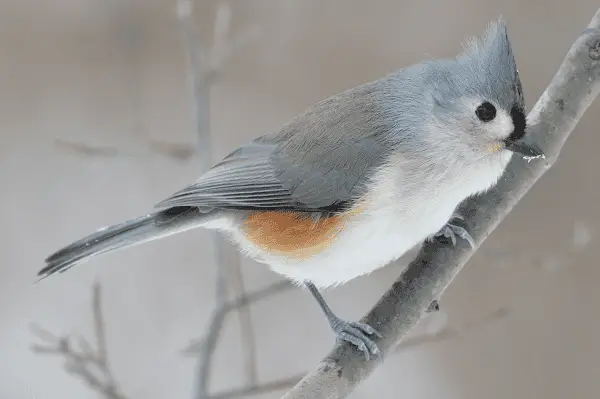
Despite its small size, the tufted titmouse is a bold and curious bird, often visiting backyard feeders in search of seeds, nuts, and suet. With its striking dark gray plumage, white cheeks, and bright black eye, the tufted titmouse is a delightful addition to any backyard bird-watching experience, showcasing the incredible diversity of nature’s mohawk-sporting avians.
Final Thoughts:
Some birds have cool mohawks, and they’re not just for looks. Also, These mohawks help them talk to each other, find a partner, and scare off enemies. Sadly, because they look so unique, some people catch them to sell as pets.
A lot of these birds are in danger now. They face problems like losing their homes, being hunted, and getting caught for the pet trade. But, some birds with mohawks are doing okay and are even seen as too many in some places.
This article talked about just a few of these birds, but it gives us a peek into their interesting world.







